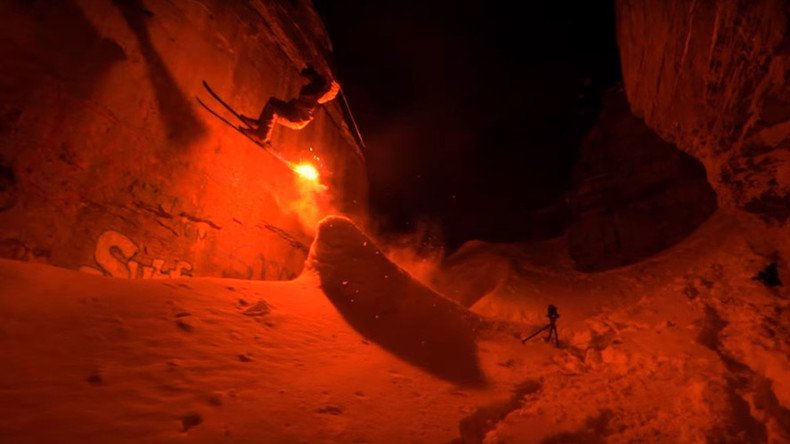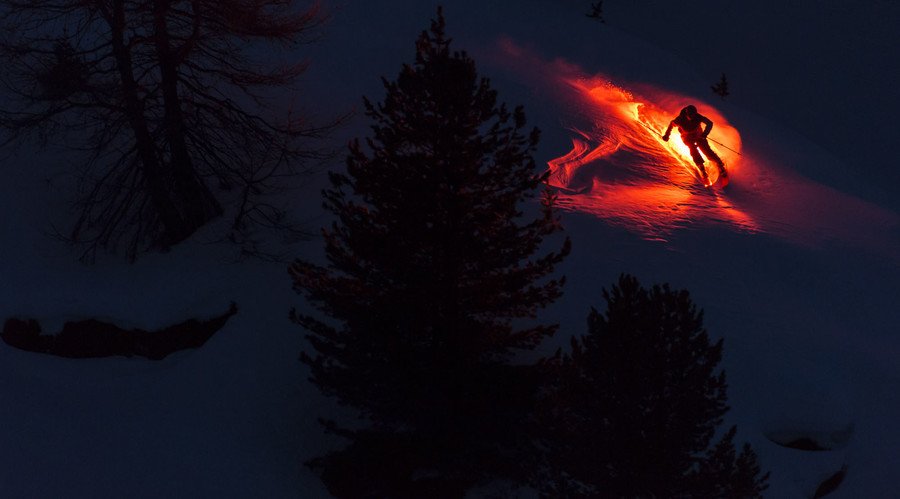Beautiful FLARE skiing shows off dazzling Swiss winter nights (VIDEO)

As a shadowy figure meanders down a powdery slope, illuminated only by blazing torches attached to their feet, there is no denying that flare skiing in the Swiss Alps is a picturesque sight.
“Torched,” a conceptual ski film created by a freeskier-director duo, aims to enlighten people to “wonders of the winter nights” in Valais, Switzerland.
Since appearing on YouTube on January 14, it has gained over 50,000 views.
It shows skiers and snowboarders scooting effortlessly across snowy peaks with red safety flares lighting up the night sky.
The ethereal video, set to the eerie tones of Parisian music producer Saycet, is the brainchild of professional skier Nicolas Vuignier and filmmaker Jules Guarneri.
It was shot over the course of three months last year.
“Using rescue flares to lighten darkness, the riders appear as sparks to reveal an ephemeral world of shadows,” the creators say.
In a behind-the-scenes explainer, Vuignier and a number of riders can be seen testing out their bright spark idea.
Since the skiers were effectively riding blind, they had to know the slopes like the back of their hand, Vuignier told RT.
“We skied only one spot per evening. During the day the rider inspected a line he wanted to ski and memorized its features… All of the riders that participated in this project are professionals, so memorizing a line is something we are pretty used to.”
“There were a lot of variables that made shooting this film complicated,” Vuignier said. “We had a pretty bad winter last year, that made the whole thing so much more complicated because we had the right snow conditions only two or three times per month - shooting in January and ending in late March.”

“As the days got longer, we ended up having to wait until almost 10pm on the mountain to film 20 seconds of skiing. Thankfully, we didn’t have any injuries whatsoever and we only skied areas we felt comfortable riding in low visibility.”
Although a dazzling sight to behold, the nighttime activity is probably best left to those who are a skilled with pyrotechnics and cannoning down mountains of ice.











